45 heatmap 2 row labels
r - heatmap.2 row labels don't show on heatmap - Stack Overflow 1 heatmap.2 requires a matrix as input which only accepts numeric values (or NA) My guess is that your sample names is a character vector, which will be converted to NA by data.matrix () (NAs introduced by coercion) Try this: y <- data.matrix (Data) row.names (y) <- Data [,1] # Set rownames y <- y [,-1] # Remove column with NA Building heatmap with R – the R Graph Gallery How to do it: below is the most basic heatmap you can build in base R, using the heatmap() function with no parameters. Note that it takes as input a matrix. If you have a data frame, you can convert it to a matrix with as.matrix(), but you need numeric variables only. How to read it: each column is a variable. Each observation is a row.
seaborn.heatmap — seaborn 0.11.2 documentation - PyData If True, plot the column names of the dataframe. If False, don’t plot the column names. If list-like, plot these alternate labels as the xticklabels. If an integer, use the column names but plot only every n label. If “auto”, try to densely plot non-overlapping labels. mask bool array or …
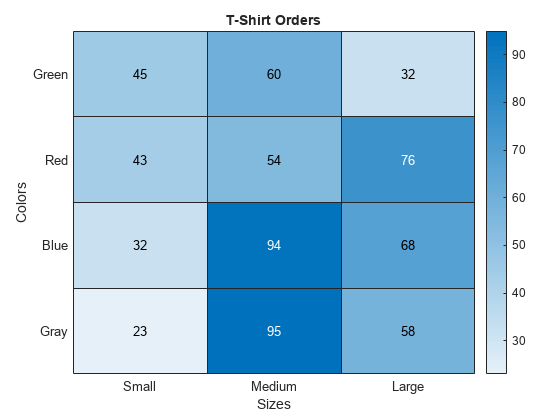
Heatmap 2 row labels
Chapter 2 A Single Heatmap | ComplexHeatmap Complete Reference Heatmap(mat, name ="mat", col =col_fun) As you can see, the color mapping function exactly maps negative values to green and positive values to red, even when the distribution of negative values and positive values are not centric to zero. Also this color mapping function is not affected by outliers. In following plot, the clustering is r - Remove row and column names - heatmap.2 - Stack Overflow 2 I am drawing a heatmap and I do not want the row names and column names to be visible on x and y axes. So I used the following code: heatmap.2 (data, xlab="PROTEINS", ylab="DRUGS", labRow=FALSE, labCol = FALSE) Then there is a big space between heatmap and PROTEINS and DRUGS labels on each axis. r bioinformatics heatmap Share How to add both row and column labels to Complexheatmap - Bioconductor Using this simple script, the column labels got printed, but the row labels did not. Any suggestions on how to add the row labels (sample names) to the heatmap: library (ComplexHeatmap) filename <- "Data.txt". # Read the data into a data frame. my_data <- read.table (filename, sep ="\t", quote = "", stringsAsFactors = FALSE,header = TRUE ...
Heatmap 2 row labels. heatmap.2 - change column & row locations; angle / rotate heatmap.2 - change column & row locations; angle / rotate. Dear folks, I am also looking for method to rotate label text with heatmap.2. Eventually, I have managed to find this solution: library (gplots) library (RColorBrewer) heatmap.2 (x,col=rev (brewer.pal (11,"Spectral")),cexRow=1,cexCol=1,margi ns=c (12,8),trace="none",srtCol=45) The key ... Matplotlib Heatmap: Data Visualization Made Easy - Python Pool Aug 27, 2020 · Do you want to represent and understand complex data? The best way to do it will be by using heatmaps. Heatmap is a data visualization technique, which represents data using different colours in two dimensions.In Python, we can create a heatmap using matplotlib and seaborn library.Although there is no direct method using which we can create heatmaps using … Chapter 3 Heatmap Annotations | ComplexHeatmap Complete Reference The annotation function defines how to draw the graphics at a certain position corresponding to the column or row in the heatmap. ... simply as rectangles (with labels inside) to mark heatmap slices, 2. as plotting regions to associate subsets of rows or columns in the heatmap. 3.4.1 Block for putting labels. plotly.graph_objects.Heatmap — 5.9.0 documentation Sets the default length (in number of characters) of the trace name in the hover labels for all traces. -1 shows the whole name regardless of length. 0-3 shows the first 0-3 characters, and an integer >3 will show the whole name if it is less than that many characters, but if it is longer, will truncate to namelength-3 characters and add an ...
Row labels in a heatmap - Bioconductor ;-D Anyway, heatmap () and heatmap.2 () just use the row.names of the matrix you input. So just change them. row.names (yourmatrix) <- seq (1, nrow (yourmatrix),1) You might also consider plotting the heatmap in such a way that you can read the row labels. As a pdf, you can play around with the width and height until you get what you want. seaborn.heatmap — seaborn 0.11.2 documentation - PyData Plot rectangular data as a color-encoded matrix. This is an Axes-level function and will draw the heatmap into the currently-active Axes if none is provided to the ax argument. Part of this Axes space will be taken and used to plot a colormap, unless cbar is False or a separate Axes is provided to cbar_ax. Parameters. How to color a group of labels or branches in heatmap.2 in R 1 Answer. In order to colour the row names in red you need to do the following: data (mtcars) x<-scale (mtcars) set.seed (123) tf<-sample (rownames (x), 5) Create a vector cols with the colours of the row names. Red for tf and Black anywhere else. #initiate cols with all black cols <- rep ('black', nrow (mtcars)) #turn red the specified rows in ... Set custom row labels? · Issue #5 · jokergoo/ComplexHeatmap Instead of setting the row labels using rownames(), is it possible to supply a custom list of row labels to Heatmap()?In other words, I am looking for something similar to the labRow argument in heatmap.2().The reason is that my row labels have duplicate names and consequently I cannot use rownames() on my data frame.
R Language Tutorial - heatmap and heatmap.2 - SO Documentation heatmap.2 (x, trace="none", key=TRUE, Colv=FALSE,dendrogram = "row",col = colorRampPalette (c ("darkblue","white","darkred")) (100)) As you can notice, the labels on the y axis (the car names) don't fit in the figure. In order to fix this, the user can tune the margins parameter: Heatmap 2 row labels - wmvd.baan-group.nl Go to Insert > Visualization > Heatmap 2. Under Inputs > DATA SOURCE > Output in 'Pages', select your table from the dropdown menu 3. Under Chart > APPEARANCE > Row sorting or dendrogram, select Dendrogram 4. Under Chart > APPEARANCE > Column sorting or dendrogram, select Dendrogram Object Inspector Options. The following is an explanation of. 1. 18.1 heatmap.2 function from gplots package | Introduction to R 18.1 heatmap.2 function from gplots package. A heatmap is a graphical representation of data where the values are represented with colors. The heatmap.2 function from the gplots package allows to produce highly customizable heatmaps. ... labRow,labCol : remove or keep row or col labels; main : title; heatmap function - RDocumentation Typically, reordering of the rows and columns according to some set of values (row or column means) within the restrictions imposed by the dendrogram is carried out. RDocumentation. Search all packages and functions. stats (version 3.6.2) ... end = .3) hv <- heatmap(x, col = cm.colors(256), ...
18.1 heatmap.2 function from gplots package | Introduction to R 18.1 heatmap.2 function from gplots package. A heatmap is a graphical representation of data where the values are represented with colors. The heatmap.2 function from the gplots package allows to produce highly customizable heatmaps. ... labRow,labCol : remove or keep row or col labels; main : title;
Heatmap: row labels & dendogram - Bioconductor Hi, A two questions about heatmap.2 : What is the best approach to make the row labels readable? Right now they are merging. I plotted 104 genes. The command cexRow is not giving me the desired result, since the font size needs to be set extremly small to fit all in; so small that no one can read it!!!
How to display the row label of a heatmap at the end of dendrogram ... Carol, I don't know if there is some way in the heatmap.2 function to do so, but if you change the function a little bit it is possible. All you have to do is change the following term: axis (4, iy, labels = labRow, las = 2, line = -0.5, tick = 0, cex.axis = cexRow) to this one: axis (2, iy, labels = labRow, las = 2, line = -0.5, tick = 0, cex ...
2 Labels Row Heatmap [U3T5HC] Heatmap 2 Row Labels 2 includes a new cartographic visualization option - a heat map. sub - Specify the size of the subtitle label with a numeric value of length 1. In this mode, click the heat map to display a data tip showing the expression value, the gene label and the sample label of current data point. ...
Heat Map Chart Chart Guide & Documentation – ApexCharts.js options = { plotOptions: { heatmap: { distributed: true } } } Inversed Color Scale. In a multi-series heat map chart, if you want to inverse the color scale from rows to column, you may enable the plotOptions.heatmap.colorScale.inverse property. A quick illustration of the above setting.
Chapter 2 A Single Heatmap | ComplexHeatmap Complete … 2.6 Dimension labels. The row names and column names are drawn on the right and bottom sides of the heatmap by default. Side, visibility and graphics parameters for dimension names can be set as follows: ... Consider following visualization: For each row in the heatmap, if values in the neighbouring two columns have the same sign, we add a red ...
Heatmap Basics with Seaborn. A guide for how to create … Jun 29, 2020 · Hands-on. We’ll use Pandas and Numpy to help us with data wrangling. import pandas as pd import matplotlib.pyplot as plt import seaborn as sb import numpy as np. The dataset for this example is a time series of foreign exchange rates per U.S. dollar.. Instead of the usual line chart representing the values over time, I want to visualize this data with a color …
How to add both row and column labels to Complexheatmap - Bioconductor Using this simple script, the column labels got printed, but the row labels did not. Any suggestions on how to add the row labels (sample names) to the heatmap: library (ComplexHeatmap) filename <- "Data.txt". # Read the data into a data frame. my_data <- read.table (filename, sep ="\t", quote = "", stringsAsFactors = FALSE,header = TRUE ...
r - Remove row and column names - heatmap.2 - Stack Overflow 2 I am drawing a heatmap and I do not want the row names and column names to be visible on x and y axes. So I used the following code: heatmap.2 (data, xlab="PROTEINS", ylab="DRUGS", labRow=FALSE, labCol = FALSE) Then there is a big space between heatmap and PROTEINS and DRUGS labels on each axis. r bioinformatics heatmap Share
Chapter 2 A Single Heatmap | ComplexHeatmap Complete Reference Heatmap(mat, name ="mat", col =col_fun) As you can see, the color mapping function exactly maps negative values to green and positive values to red, even when the distribution of negative values and positive values are not centric to zero. Also this color mapping function is not affected by outliers. In following plot, the clustering is
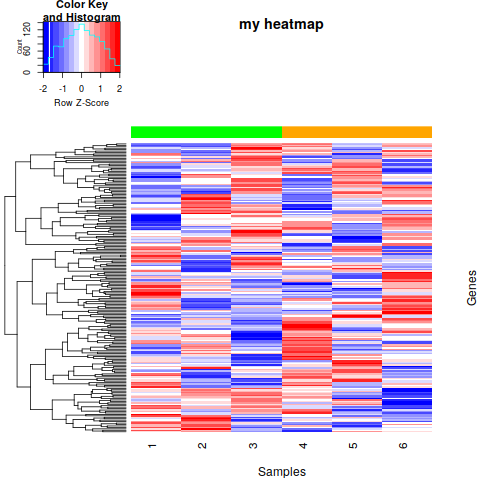


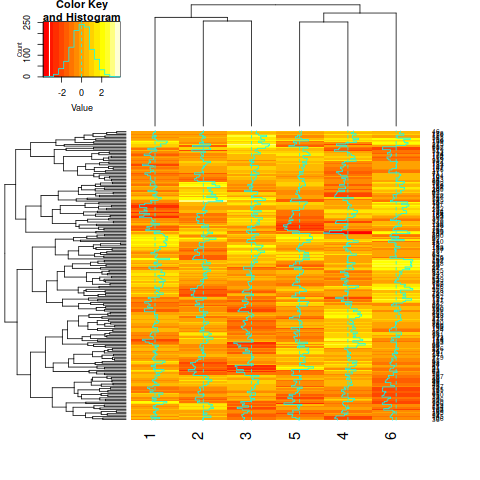


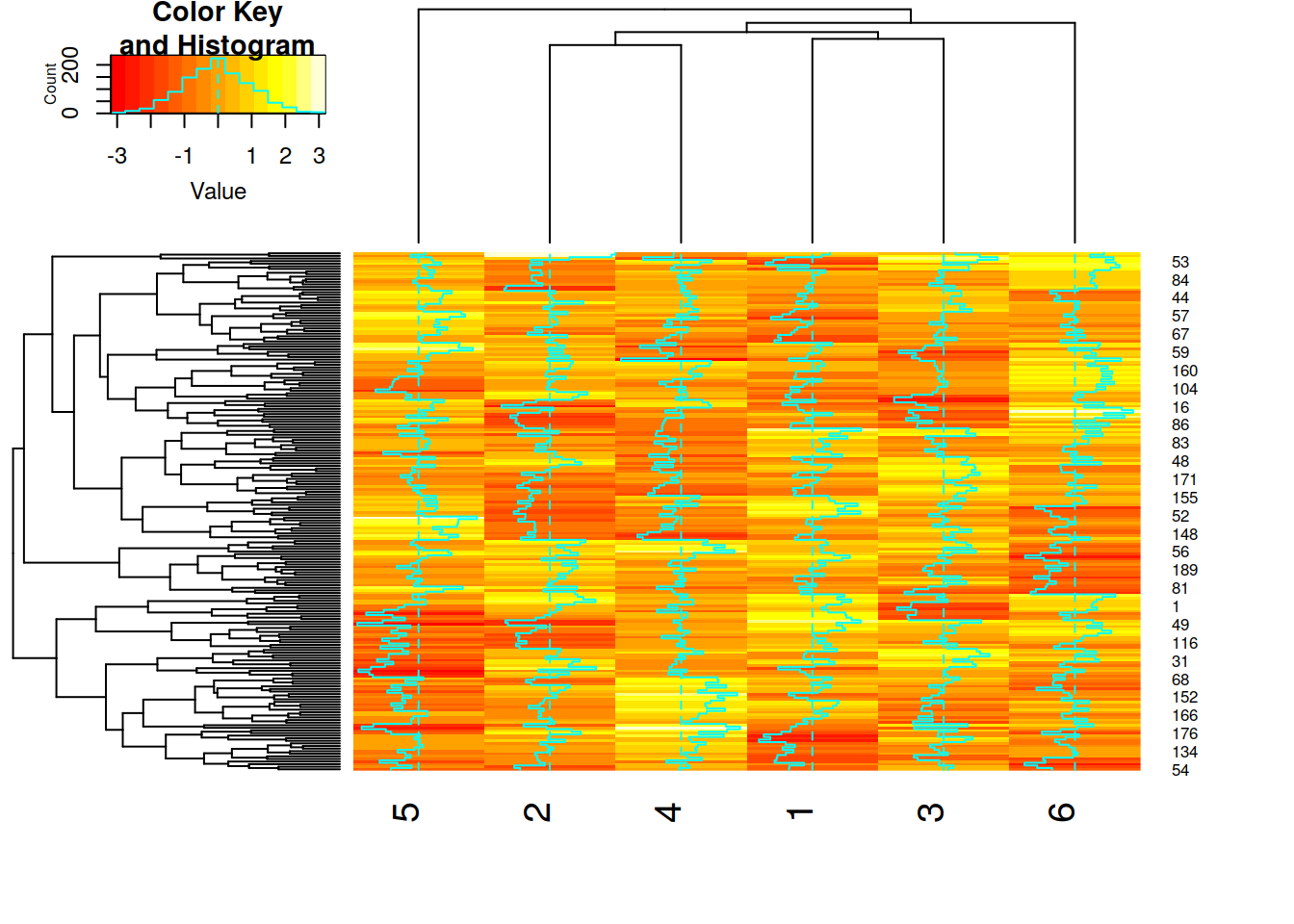

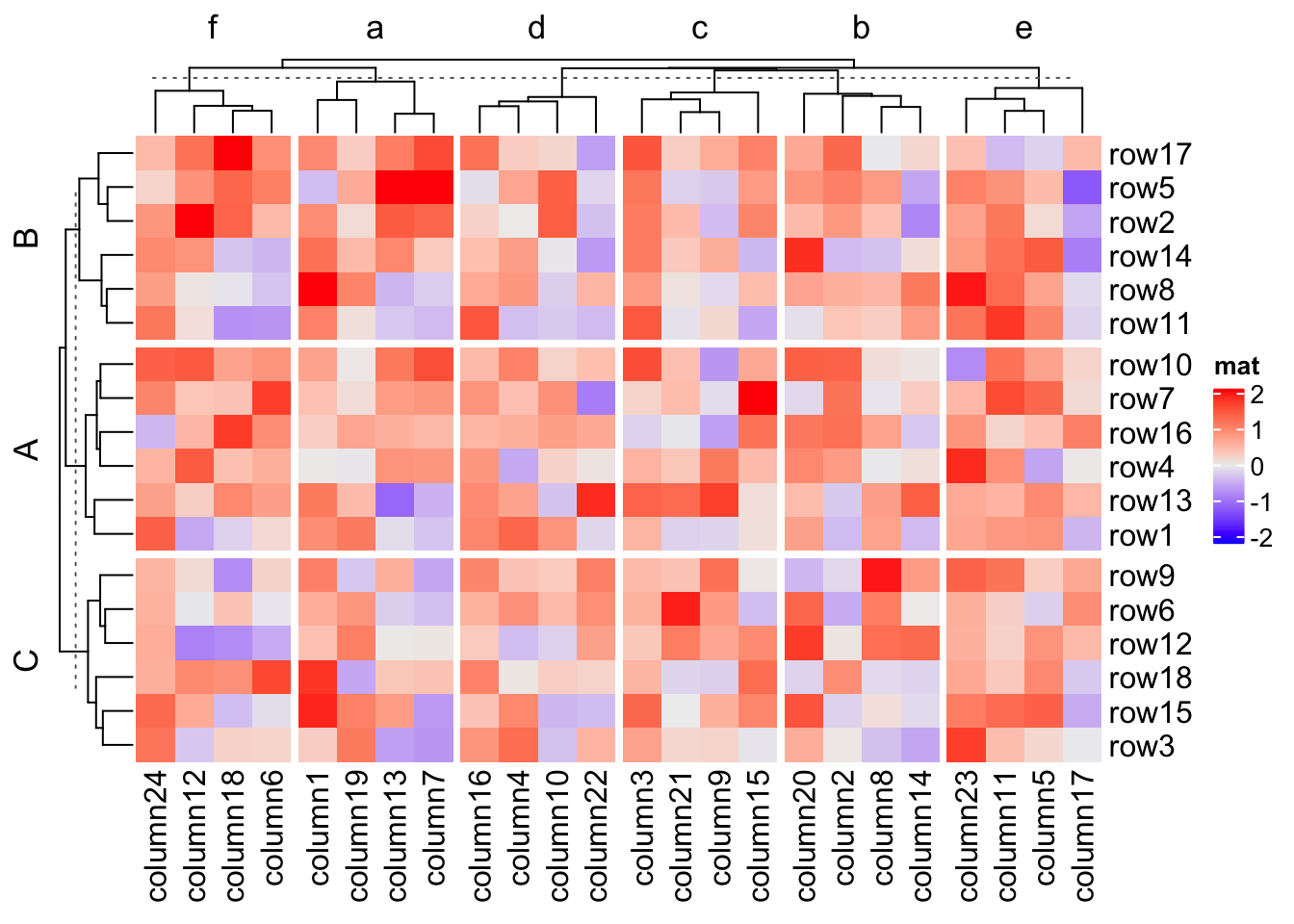



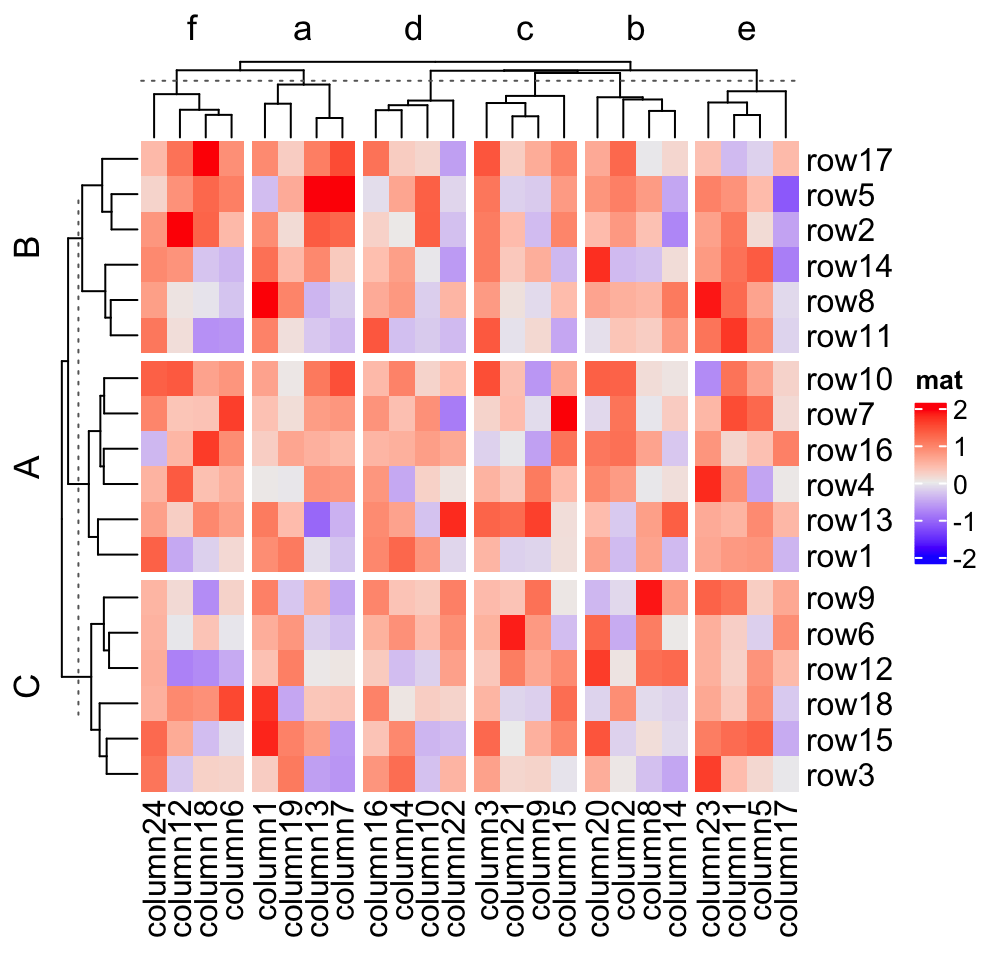



Post a Comment for "45 heatmap 2 row labels"